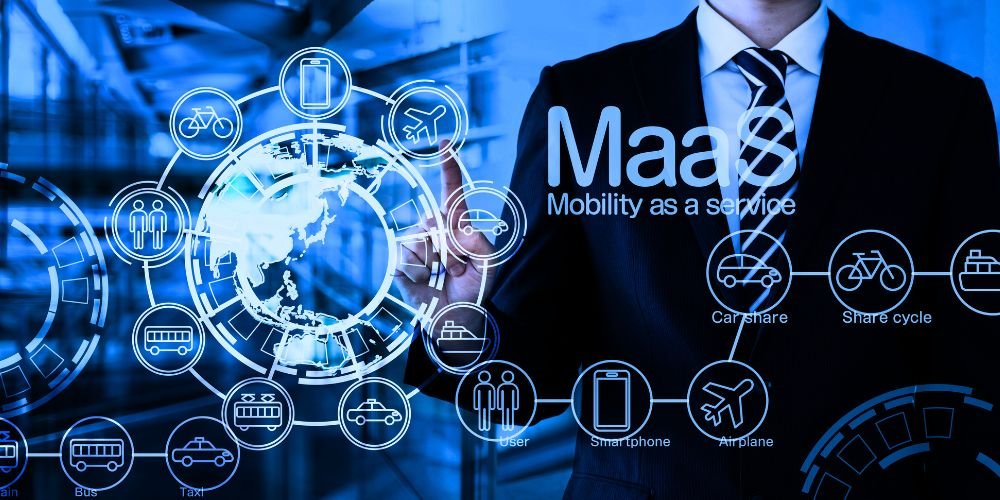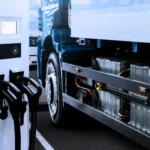Mobility as a Service (MaaS) is a groundbreaking concept reshaping the traditional transportation paradigm. This in-depth exploration seeks to unravel the fundamental principles, key components, recent innovations, notable applications, and the transformative impact of Mobility as a Service on how we perceive and experience Mobility.
Understanding Mobility as a Service (MaaS)
Mobility as a Service represents a paradigm shift in transportation, moving from individual ownership models to a more integrated and user-centric approach. At its core, Mobility as a Service is a comprehensive system that seamlessly combines various modes of transport, such as public transit, ridesharing, biking, and more, into a unified and easily accessible service. The ultimate goal is to provide a convenient, efficient, and sustainable solution to urban transportation challenges.
Key Components of Mobility as a Service (MaaS)
The efficacy and accessibility of MaaS are attributed to several key components that work in tandem to create a cohesive system:
- Multimodal Integration: Mobility as a Service platforms excel in integrating diverse transportation options into a singular, user-friendly system. It enables users to plan, book, and pay for their journeys seamlessly, promoting an integrated and interconnected transportation experience.
- Digital Platforms: Central to Mobility as a Service uses digital platforms and mobile applications, allowing users to access real-time information, plan routes, and conduct transactions effortlessly. These platforms act as the nerve center of MaaS, providing users with the tools needed for a streamlined and efficient travel experience.
- Payment Systems: Mobility as a Service simplifies payment processes by offering unified payment solutions. It eliminates the need for separate transactions for each mode of transport, fostering a more convenient and user-friendly payment experience.
Recent Innovations in Mobility as a Service (MaaS)
Recent innovations have propelled MaaS into new realms, addressing key challenges and enhancing the overall user experience:
H3: Advanced Route Planning Algorithms
Innovations in route planning algorithms have revolutionized travel efficiency within MaaS platforms. These algorithms leverage real-time data on traffic, weather conditions, and transport availability to provide users with the fastest and most reliable routes, ensuring a seamless and time-efficient journey.
Seamless Ticketing and Access Control
Integration of contactless payment systems and digital ticketing has streamlined the user experience within MaaS platforms. It eliminates the need for physical tickets, reduces wait times, and enhances the overall efficiency of the transportation process.
Integration of Autonomous Vehicles
A futuristic aspect of MaaS involves integrating autonomous vehicles, representing a significant leap forward in providing safe and efficient transportation services without human drivers. This innovation aims to redefine the landscape of urban Mobility.
Notable Applications of Mobility as a Service (MaaS)
MaaS transcends traditional transportation, influencing various sectors and industries:
Urban Planning and Sustainability
Mobility as a Service plays a pivotal role in urban planning, promoting sustainable transportation solutions, reducing traffic congestion, and minimizing the environmental impact of traditional commuting. MaaS contributes to creating more sustainable and livable cities by encouraging eco-friendly transport options.
Accessibility and Social Inclusion
MaaS enhances accessibility and social inclusion by providing affordable transportation options. It ensures that all community members, including those with mobility challenges, can actively participate in economic and social activities, fostering a more inclusive society.
Corporate Mobility Solutions
Businesses leverage MaaS to provide employees with efficient and cost-effective commuting options. It contributes to enhanced employee satisfaction and productivity and aligns with corporate sustainability goals.
Tourism and Visitor Experience
MaaS enhances the visitor experience in tourist destinations by offering easy-to-use, comprehensive transportation services. It encourages exploration, reduces reliance on traditional modes of transportation, and contributes to the local economy by facilitating tourist mobility.
Challenges in Mobility as a Service (MaaS)
While Mobility as a Service holds immense promise, several challenges hinder its widespread adoption and efficiency:
Regulatory Frameworks and Standardization
The lack of standardized regulations and frameworks poses challenges for MaaS implementation. Collaborative efforts between governments and private entities are crucial to establishing cohesive guidelines that facilitate the seamless integration of MaaS into existing transportation systems.
Data Security and Privacy Concerns
As MaaS relies heavily on digital platforms and user data, addressing data security and privacy concerns is paramount. Robust cybersecurity measures are essential to build and maintain user trust in MaaS platforms.
Infrastructure Integration
Efficient Mobility as a Service implementation requires seamless integration with existing transportation infrastructure. It necessitates significant investments and coordination among various stakeholders to ensure a smooth transition to integrated mobility solutions.
Future Trends in Mobility as a Service (MaaS)
As technology continues to advance, the future of MaaS promises exciting trends that will further redefine the capabilities and applications of integrated mobility solutions:
Integration of Augmented Reality (AR)
Integrating Augmented Reality (AR) into MaaS applications is poised to revolutionize the user experience. AR features provide users with real-time information on routes, transportation options, and points of interest, enhancing overall navigation and engagement.
Environmental Impact Assessment
Future MaaS platforms may incorporate features that assess the environmental impact of different transportation modes. This innovation encourages users to make eco-friendly choices, contributing to sustainability goals and promoting environmentally responsible transportation.
Personalized Mobility Experiences
Advancements in artificial intelligence enable MaaS platforms to offer personalized recommendations based on user preferences. This tailoring of the user experience makes MaaS more user-friendly and enhances customer satisfaction.
Global Expansion and Interconnected Networks
The future of MaaS involves global expansion, with interconnected networks facilitating seamless travel across cities and even countries. This vision aims to create a truly borderless transportation experience, allowing users to navigate the world easily.
Conclusion
Mobility as a Service stands as a revolutionary force in transportation, offering a vision of integrated, sustainable, and user-centric mobility solutions. From reshaping urban landscapes to enhancing accessibility and efficiency, MaaS has the potential to redefine the way we move. Despite existing challenges, ongoing innovations in route planning, payment systems, and the integration of emerging technologies signal a promising future for Mobility as a Service. As research and development continue to push the boundaries of what is possible, MaaS emerges as a driving force in shaping the future of Mobility on a global scale.










